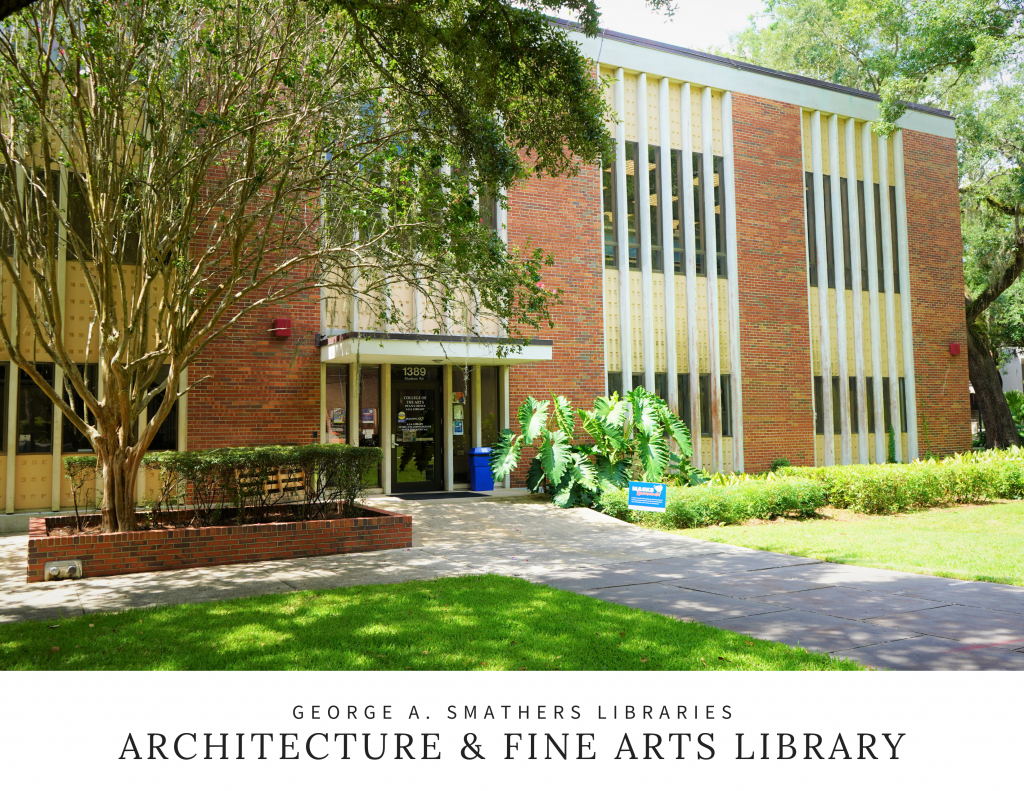Visiting the George A. Smathers Libraries
11 Architecture & Fine Arts Library (AFA)
Architecture & Fine Arts Library (AFA) at a Glance
- The most interesting desks on campus — the double decker carrels!
- Collections of art books, sheet music, fabric samples, and more
- Great place for quiet, individual study
- Daytime hours only: stop by between classes
- A calm and quiet respite from the bustle of campus
Get Creative at the Architecture & Fine Arts Library (AFA)
Founded in 1965, the Architecture & Fine Arts Library (also known as AFA) is one of the largest art libraries in the the southeast United States. This library is an intimate space with high ceilings, a unique design, and interesting features, such as the famous double-decker carrels and a piano keyboard right by the door.
The AFA Library can be sometimes hard to find as it is located in the heart of the Fine Arts Building A. Check out the map in this guide. The best way to find AFA is by walking east from Turlington Plaza until you reach the many food places near Little Hall; from there, it is just a matter of looking for the AFA sign on the south side of Stadium Road. Once Little Hall comes into view, the AFA library won’t be too far away. Inside Fine Arts A, head upstairs to the second floor to find the AFA Library.
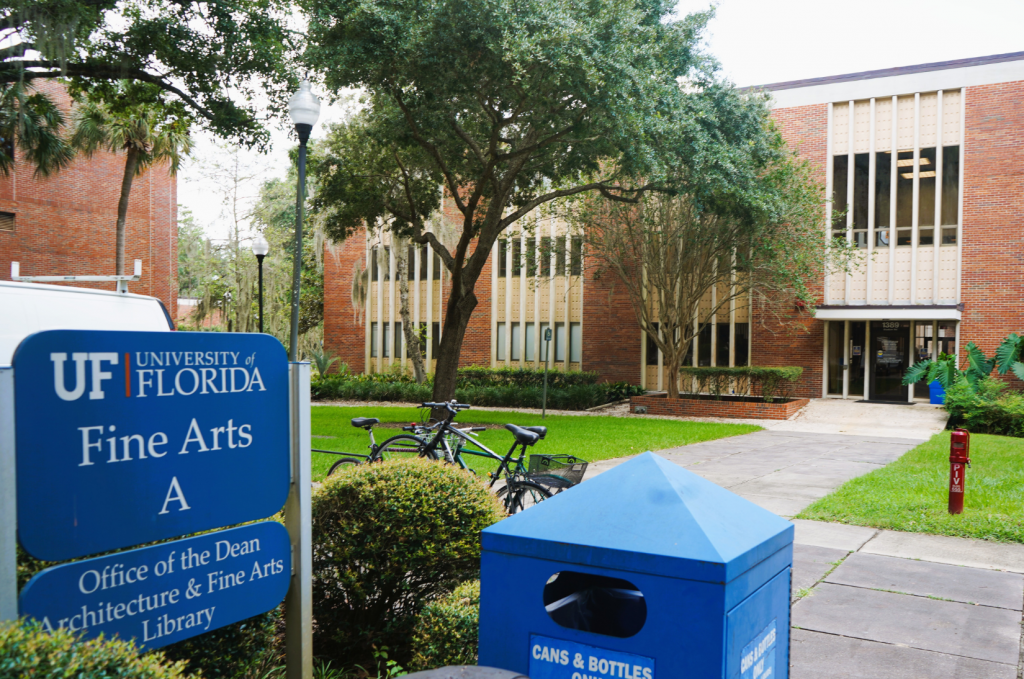
You can also reach the AFA Library through its beautiful south entrance from the Fine Arts C building. The south side of AFA is connected to the Fine Arts C by an enclosed, indoor bridge between the buildings. With floor to ceiling windows and filled with sunlight, this bridge is a neat walkway to see on campus. The librarians at AFA love it!
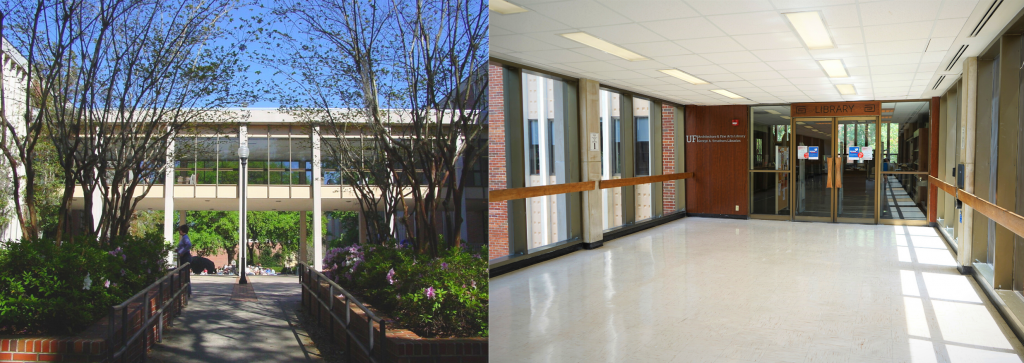
A Variety of Quiet Study Spaces
The most iconic and popular feature of the AFA Library is the group of double-decker study carrels. These carrels can be best described as connected desks and tables that can serve as individual work spaces.
There is a top and bottom portion of each carrel, allowing for more room for students to study. The lower level desks almost feel like sensory deprivation rooms to limit distractions. Climbing up and sitting on the top portion of the carrel provides a great view of the library. You have to try them!
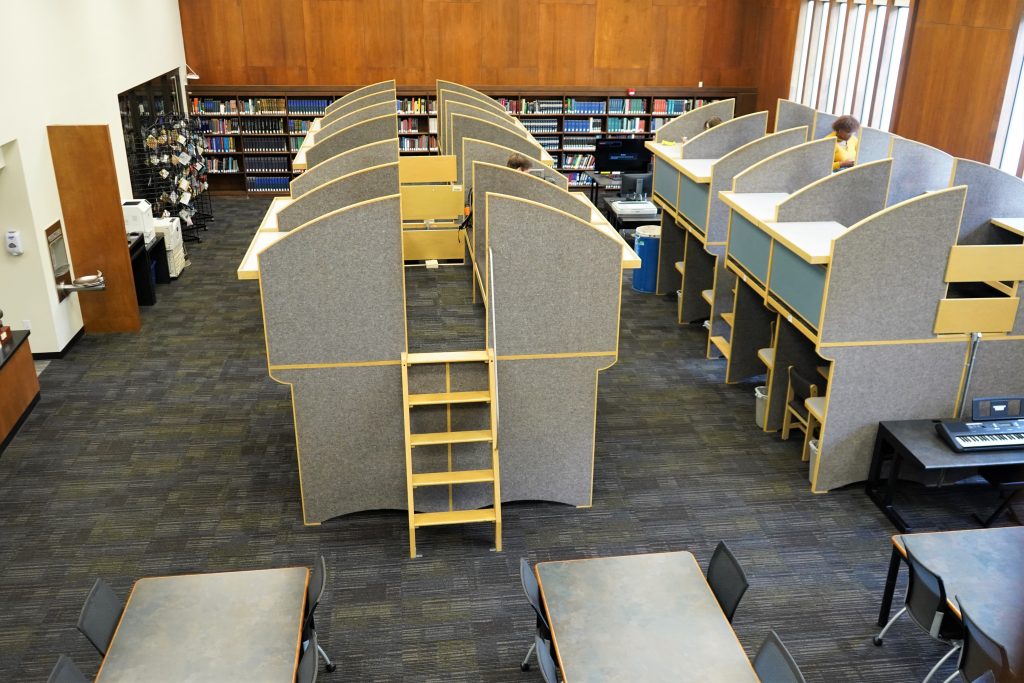
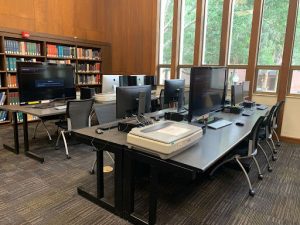
In addition to the double-decker carrels, there are other obvious and hidden places to work in AFA. Near the carrels on the main floor, you can find large group tables and sections with individual tables. There are computers available for students to work on behind the carrels, which are connected to a printer. There are also individual desks scattered throughout the library, including on the upper floor where you can prep for your exams surrounded by the book stacks.
Remember, all of these spaces are areas where students must be quiet at all times! Because this library is exclusively for silent, individual study, the AFA Library is a great place to get some serious work done.
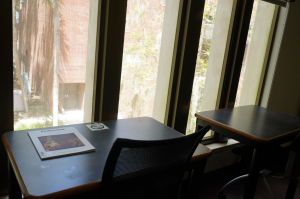
You will not find group study rooms at AFA, but there are some large tables where friends can sit together to study individually in each other’s company. It is very common to find students working hard here during finals season. Students also hang out in the study spaces between classes to get work done away from the bustle of campus.
Resources and Collections
When it first opened, the AFA Library held about 20,000 volumes, but it has since expanded to hold more than 125,000 items and many other resources for students. The library holds the collections for the subjects of architecture, visual arts, art history, music, museology, interior design, and building construction. These collections are associated with the College of the Arts and the College of Design, Construction and Planning.
Although the resources housed in AFA may be catered to these specific majors, any student of any major is able to utilize the resources or spaces at the library. A fan of newspaper comic strips, for example? You can find books throughout history with comics at AFA.
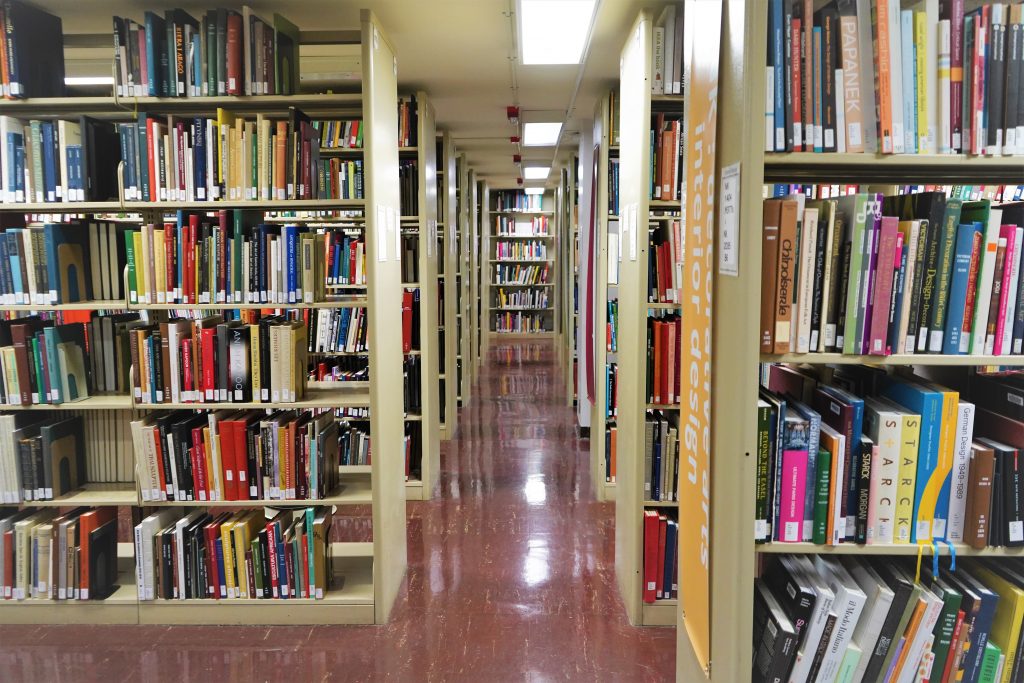
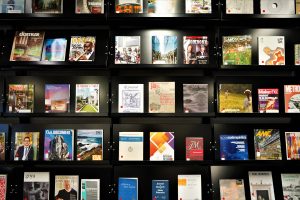
On the main floor of the library, students can also find an entire wall of periodicals for browsing. These magazines and journal issues feature a diverse array of subjects that students are free to look at for class projects or research, or just for fun.
The AFA Library hosts a variety of resources and materials, ranging from performing arts periodicals to the Oxford Music and Art online collection. The library has print collections that include dictionaries, encyclopedias, handbooks, and other sources that aid design, art, and music researchers. In addition to books and periodicals, there are also physical CDs and DVDs at hand for students to use. Many items can be accessed electronically, but there are a lot of unique physical items in AFA.
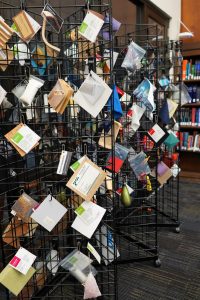
Some items in AFA are not available for checkout, but you can still see them! AFA has some rare art items in their own special collections, which can only be used inside the library. Here, you can view items including 16th-century imprints and a rare portfolio of Frank Lloyd Wright drawings, as well as multimedia items like music, photography, and videos.
One of the quirky resources available at AFA is the Materials Tower, which includes scraps of all different kinds of fabrics and materials that you can use for artistic inspiration. You’ll find this on the main floor behind the carrels.
Technology
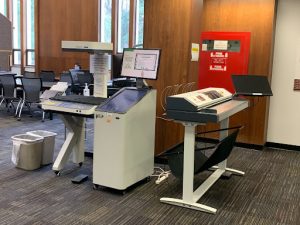
Like some of the other libraries on campus, AFA has a small collection of circulating technology. All students who visit the library are free to check out and use tech like projectors, video cameras, and iPads.
Some technologies unique to the AFA Library include DVD players, VHS players, and a 35mm film scanner. Because everything is digital now, DVD and VHS players can be hard to come by; these players really come in handy if you need to view an old movie for a project (or just for fun!). The 35mm film scanner can be used to digitize photo negatives from the art collection or from your family’s old photo box.
The AFA library also has KIC Scanners, which can be used to scan books or other materials that you can then email to yourself. Additionally, there is a large-form scanner that can be used for scanning digital copies of large art pieces and posters.
Research Assistance
If you are looking to do research in any of the subjects found in AFA, you can ask for help getting started at the Service Desk located by the AFA bridge entrance. Any time the library is open, these workers can get you started with using the library, finding resources, and more.
We also recommend booking time to speak with one of the subject specialist librarians to help you! They will have tailored advice for approaching your project. If you’re getting started on your own, the subject librarians at AFA have created multiple research guides found on the library’s website. Each research guide provides resources that are also approved by AFA.
The subject areas covered by the AFA Library Research Guides include the following:
- Architecture
- Art & Art History
- Ceramics
- Construction Management
- Dance
- Historic Preservation
- Images/Visual Research
- Interior Design
- Landscape Architecture
- Museum Studies
- Music
- Sustainability
- Theatre
- Urban & Regional Planning
Finally, reach out to the librarians at AFA to learn more about workshops, library orientations, and tours of the AFA Library so that you are equipped and ready to jump into your research projects. There are many services available that can make conducting research easier for students!
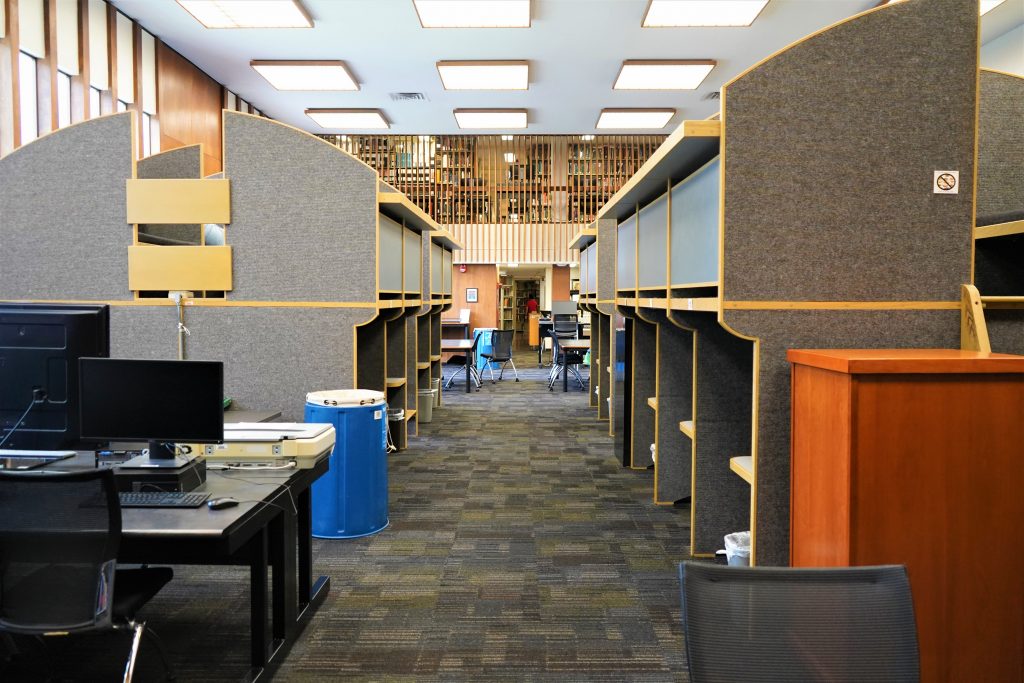
Plan Your Visit to AFA Today
The AFA Library is a beautiful gem on campus where you can quietly study and be surrounded by a creative atmosphere. AFA is located in the Fine Arts Building A and is usually open during daytime business hours. The library also hosts pop-up performing arts events during the semester, so students should make sure to visit and take a look. Go check it out!
Message from an AFA Librarian
Need a peaceful place to study? The Architecture & Fine Arts Library is usually a quiet space and we have our signature double decker carrels available, open to all.
– Ann Lindell, Librarian and Director of AFA
A study carrel is a type of desk with dividers around an individual study space. They are found commonly in the quiet sections of libraries.
Stacks are the shelving the library uses to hold materials. Library West has moving stacks!
The general collection of a library refers to items available on the shelves to check out and take home. At UF, most general collection items can be checked out by undergraduate students for eight weeks.
A periodical is a type of publication that comes out regularly in issues, such as a newspaper, magazine, or academic journal. They might be scholarly or general resources, depending on the intended audience.
Check out (also called a “loan”) describes when you borrow materials from the library. UF undergraduate students can borrow most items for up to eight weeks.
Special collections are the crossover between libraries and museums: these collections cannot be checked out and are usually historic materials, but they can be used in designated reading rooms in the library.
At UF, rare books, photographs, memorabilia, archives, and other items are housed in Special Collections in the Smathers Library. Undergraduate students are welcome to use these items in Smathers!
Pro Tip: Reach out to Special Collections ahead of time so that they can get the items you want to see ready for your arrival.
In addition to books, the libraries at UF also have nontraditional materials available to borrow, including lots of technology. The circulating technology collection includes things like portable 3D printers, virtual reality headsets, sewing machines, tools, podcasting microphones, 360° cameras, and more.
KIC scanners are the book scanners available in the Libraries at UF. Unlike the scanners attached to most computers where you have to lay a book flat and facing down, these scanners can image books easily with a camera facing down toward a book holder.
The service desk is the place where the magic happens. Check out items, ask questions about research, and get help with whatever you need from the friendly library workers at the main desk. Also called the “circulation desk.”
A subject librarian (or "subject/area specialist") is a librarian who has expertise in a particular subject, discipline, or topic. Every major at UF has a subject librarian who is uniquely qualified to help them with their research.
A research guide (often called a "library guide" or “LibGuide") is a guide created by librarians to help you find information on a topic. For example, if you wanted to learn how to do research in the library, you could check the Introduction to Library Research Guide.

